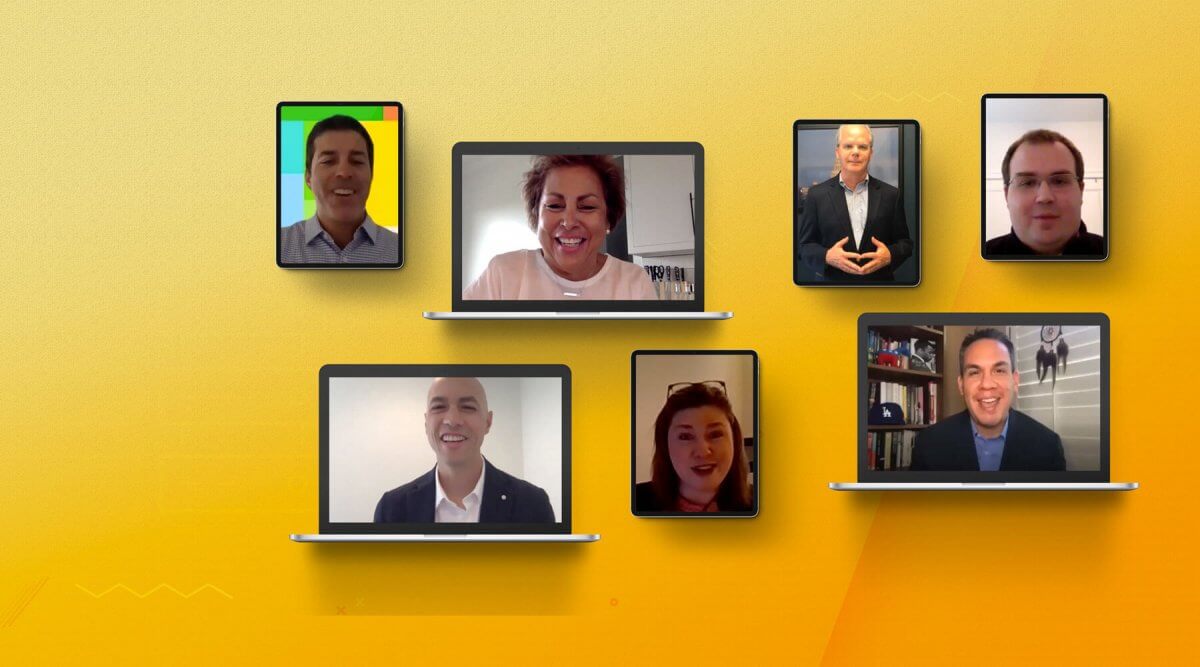Following our previous work in defense of the Digital Millennium Copyright Act (DMCA) safe harbors, we’ve seen a lot of misinformation circulating about what DMCA safe harbors are and what they’ve done for the online ecosystem. In this series, we’ll explore five common myths asserted about the DMCA and break them down.
Myth #1: The DMCA is technologically out of date.
Fact: The DMCA was created to be future proof and work for technology not imagined when the law was written: under it, the internet has flourished.
One of the worst arguments for changing the DMCA is that it is old – the whole point of the safe harbors was that they weren’t meant for the technology of 1998.
Imagine if Congress had to rewrite the law every time the next Facebook or Twitter was created? What if every time an entrepreneur envisioned the new Reddits or Amazons of the world, they had to lobby Congress for new laws?
Congress clearly envisioned- and intended- the law to change the online landscape: “… by limiting the liability of service providers, the DMCA ensures that the efficiency of the Internet will continue to improve and that the variety and quality of services on the Internet will continue to expand.”
Congress didn’t write the law about 1998 technology for a reason: doing so would create a ceiling on creativity. If the laws were written to only address the platforms existing twenty years ago, new platforms would have faced insurmountable uncertainty in entering the market and would not have been able to scale and diversify the way that they did in the United States. Instead, policy makers knew the law could never keep pace with technology in the digital age, so they created a future-proof, clear system that established a firm floor of action and (critically) enacted strong incentives for good actors to develop practices that benefitted both platforms and creators. Thanks to that forward-looking mentality, the United States is home to the world’s leading online innovators, who have all benefitted from the safe harbors created years before they were even imagined into existence.
The DMCA is not out of date, but the scope of today’s scale, diversity, and creativity of the internet ecosystem are in fact evidence that the safe harbors are both working and needed more now than ever.
Myth: #2: The DMCA isn’t working because piracy is up.
Fact: In the United States, where the DMCA applies, piracy is down.
The DMCA had multiple goals: to both grow and empower the internet, and to provide rightsholders with an effective tool to combat infringement as the internet grew. While some interest groups have attempted to diminish the effectiveness of safe harbors by claiming that piracy is up and therefore the law isn’t working for rightsholders, statistical evidence proves just the opposite.
In fact, in the U.S., the growth of the internet as a whole, and the growth of users connected to the internet, surpasses the growth of infringing activity on a percentage basis. DMCA-compliant platforms seeking legal distribution have flourished, reaching billions of users and growing to 6 percent of U.S. GDP, while infamous sites like Napster and Grooveshark have been unable to survive.
The facts are even more compelling when you consider just how piracy is defeated. Not only does the DMCA allow rightsholders to efficiently take down infringing content, it provides safe harbors for good actors to grow and reach users, directing them to legal content rather than infringing work.
For example, only a few years ago, rights holders complained that pirated works using BitTorrent platforms accounted for 50 percent of internet traffic in the U.S. Now, that traffic has dropped to the single digits with Netflix and Youtube replacing piracy with legal distribution. In fact, Netflix and YouTube represent over 50 percent of prime time viewing traffic, respectively.
The numbers don’t lie: in the effort to grow the legal online ecosystem and fight infringement, the DMCA is working.
Myth #3: The DMCA is bad for creators and diminishes the value of creativity.
Fact: Creative industries, both traditional and emerging, have greatly benefitted from the growth of legal online platforms that lower barriers to entry and increase access to global audiences.
The idea that creators are losing out in the digital age is especially troubling, given the wealth of data and examples that we have to prove that just the opposite is true. The worldwide entertainment industry has flourished with these technological advancements, demonstrating staggering growth from $449 billion in 1998 to $745 billion in 2010. Music, movies, television, and books all saw increased production, even during an economic recession. The internet under the DMCA has not threatened the entertainment industry’s survival; it has enhanced its growth and fueled new forms of cultural expression.
Success isn’t just found in the big numbers and industry growth, either. Creators now have access to global markets at the touch of their fingertips, drastically lowering barriers to entry for artists and creators and allowing a more diverse creative landscape than ever before. Millions of small and independent artists use online platforms to allow public access to their songs, photos, novels, and more. For example, Amazon’s self-publishing book service Kindle Direct Publishing allows authors to format and sell their work in e-book format and retain as much as 70 percent of the revenues. Flickr Marketplace is a photo-licensing program for Flickr users to partner with photo agencies, editors, bloggers, and other creative minds seeking original content. Platforms like IndiFlix allow consumers to stream a diverse library of independently produced movies, bringing lesser-known works to new audiences. And Justin Bieber isn’t the only star to break out on the internet: artists like Lindsey Stirling have found success through the transformative power of today’s online markets.
In short, thanks to the success of the DMCA, we have a more diverse and dynamic market than ever before, bringing both opportunity and value to those who harness the power of the digital age.
Myth #4: The DMCA isn’t balanced because rightsholders have to identify infringing content.
Fact: All stakeholders have responsibilities under the DMCA, and internet companies are going above and beyond those responsibilities to create a thriving ecosystem.
Service providers are required to take other steps beyond expeditious removal, including policies and procedures that further prevent abusive infringement, or they lose their legal protections.
Why do rightsholders identify the content? Because they are the only ones who can. Rightsholders know what content is theirs, who has a license for specific use, and when and how their content can be used. Online platforms don’t have that information – and requiring them to make legal judgements about the nature of a work would make them the “internet cops,” endangering all kinds of legal content that could be removedto avoid liability.
When some interest groups call for internet companies to take on more responsibility, they’re looking in the wrong place. These calls focus on changing the law to create dangerous requirements to police the internet (more on that here). These efforts aren’t about creating balance: they ultimately work against the public interest in both stopping infringement and protecting legal work online.
Policy makers knew the law couldn’t keep pace with technology, so in addition to sharing the responsibilities, they gave online platforms good incentives to innovate on top of the law – to the benefit of creators. The result is a plethora of “DMCA-plus” programs, which internet companies are developing, enhancing, and making available to rightsholders to make it more efficient and easier than ever to protect against infringement. ContentID, Pinterest’s attribution program, Facebook’s Rights Manager, and eBay’s VERO program are just a couple of examples.
The digital space is constantly evolving, and so too are the efforts of platforms to develop bespoke programs that keep pace with the needs of creators and innovators online.
Myth #5: The DMCA creates an eternal “whac-a-mole” problem, and a “notice and staydown” system is the solution.
Fact: “Notice and staydown” would result in internet censorship, endangering user speech and creativity, in addition to establishing tough barriers to entry online.
The premise of “notice and staydown” is simple: once an internet platform knows about allegedly infringing content, they are then responsible for preventing that material from appearing again on their platform. The results aren’t so simple: a “notice and staydown” regime would censor users by requiring platforms to police the web and block legal content, and would be a legal barrier that prevented new and emerging technologies from competing with today’s established players (all without actually having the desired result for proponents).
“Notice and staydown” would shift the responsibility of identifying infringing works from rightsholders to the parties least qualified to make legal determinations about the nature of a work. To avoid staggering liability, platforms would be forced to keep a broad array of potentially legal content offline, limiting the public’s ability to meaningfully access and distribute legitimate sources of creative works. This censorship regime ignores critical provisions of copyright law like fair use, which allows users legal access to content in certain circumstances and helps foster new forms of follow-on creative works.
“Notice and staydown” would also favor large actors and prevent new, innovative services from competing. YouTube’s ContentID cost around $60 million to get started and is still constantly being developed. For startups looking to scale the next great internet company, such a requirement would be an insurmountable barrier to entry that diminishes diversity online by preventing new players from ever having the chance to bring new ideas to market.
In response, some groups are proposing a “compromise” that only focuses on full-length content. They say this would avoid the issue of total “notice and staydown” disregarding fair use. Except that there have been circumstances where the flexible doctrine of fair use has applied to full-length works, including the famous Betamax case.
More concerningly, this “compromise” proposal does nothing to address other drastic censorship consequences (and marketplace barrier inevitabilities) of “notice and staydown” that directly contravene the public’s interest. And let’s not forget- the public interest is what’s at stake in copyright law. Public policy should encourage a diverse, vibrant online ecosystem of legal content, where user speech and creativity are protected.










